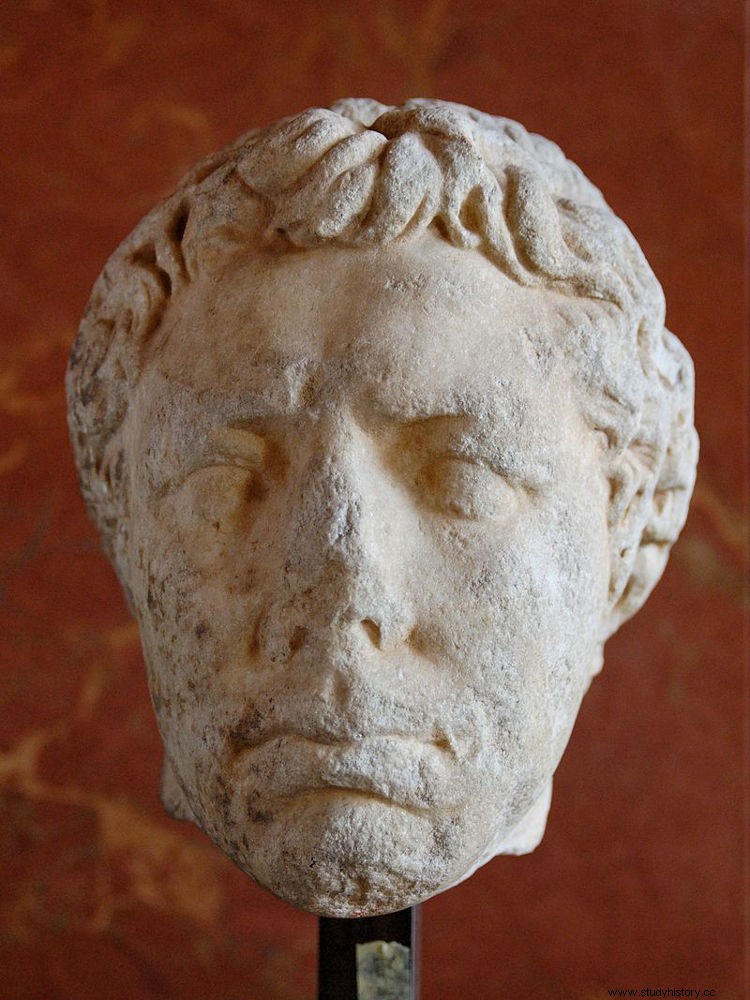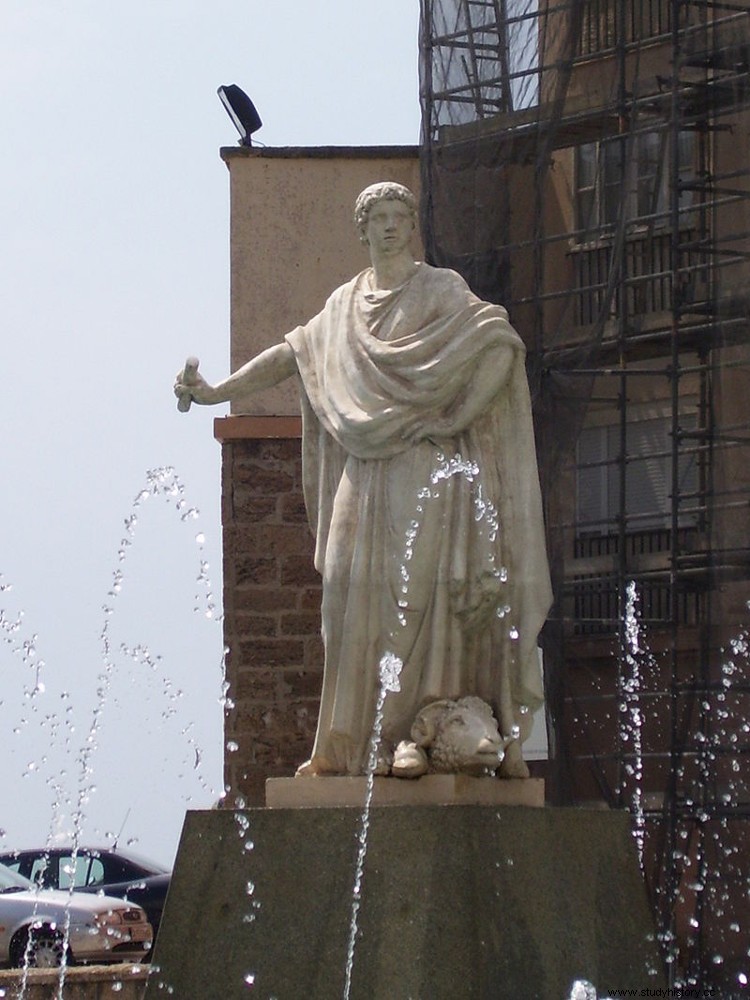The Roman Empire extended its tentacles throughout Western Europe and Asia Minor, but in Africa it limited itself to exploiting the Mediterranean coast and barely penetrated decisively inland. Explaining why would be complex and it should be remembered that, in fact, the black continent would remain like this for almost two thousand more years. Now, that's not to say that Rome didn't try to unravel some of her secrets; there were Romans who anticipated the famous 18th and 19th century explorers.
The lure of Africa, beyond Egypt or the other northern provinces, was not new in antiquity. On an undetermined date between the 7th and 4th centuries BC, the Carthaginians sent a small fleet under the command of Hanno to explore and colonize points on the Atlantic coast of the continent, as reflected in the work Hanno's Voyage, of which they are preserved. later classical copies. The Punics would have reached the equatorial region and left news of some mysterious wild men that some believe was a reference to pygmy tribes and others to gorillas. So also Pliny the Elder in the Natural History of him .
If Carthage was interested, it is logical that it would also interest Rome, which tried to open several trade routes to the interior and to the west. Although they used to include legionnaires, they were not conquest companies but they were looking for a way to establish a more or less stable relationship with various regions that they considered to have enough wealth potential to try. As almost always, gold was the preferred merchandise, although spices, skins, ivory, ebony, beasts, incense, slaves and other products were also added.

Some of these expeditions were maritime and had the goal of reaching the Indian Ocean or, once past the Pillars of Hercules (the Strait of Gibraltar), descending along the west coast, just as Hanno did, ending up in the successive archipelagos. Others were made by land, some crossing the Sahara Desert in the direction of Niger and Chad, others going up the Nile to beyond Nubia or those that went down the Red Sea towards the Horn of Africa. All developed in the first four centuries after Christ.

Pliny the Elder He recorded how Juba II, king of Numidia and Mauritania, an ally of Rome (where he had been educated) sent merchants to Mauretania Tingitana (Morocco), establishing an intense commercial relationship from the city of Volubilis, whose ruins today constitute the main attraction area tourist.
It was also the people of Juba who established a purple production factory in Mogador (current Essaouira), which, together with Sala Colonia (also called Salé, current Chellah), served as a base to visit the Canary Islands, Madeira, São Tomé and Príncipe, Cabo Verde and Fernando Poo around the year 10 AD
It has not been possible to determine whether these sailors landed on the Guinean coast, although Roman coins have been found - as in Togo, Ghana, Nigeria and Niger. Tradition says that those explorers were the ones who baptized the islands with the name of the Canary Islands, alluding to the number of dogs there were, since they did not find any humans.

The truth is that it is difficult to establish what degree of success can be attributed to the Romans in their African adventures and, above all, to know exactly how far they went. Apart from those mentioned of Juba II, Pliny has left us news of five great trips. The first took place around AD 19, when a Hispanic general (from Gades) named Lucius Cornelius Balbus the Less , who became a senator and proconsul, visited the Niger area after a campaign of conquest in southern Libya and Algeria that he decided to continue with a small military contingent from the III Augusta Legion. .
Seeking what he called the "land of the lions", he traversed the Ahaggar and Tassili mountains following an ancient caravan route. Archeology has brought to light material evidence of that adventure in the form of coins, jewelry and ceramics, unearthed in what is now Mali, as well as a classical-style mausoleum that seems to indicate that the place was partially Romanized. at least in the realm of higher classes.
The consul Gaius Suetonius Paulinus, whose name will ring a bell because he was the one who defeated the Eceni queen Boudica, also led an incursion through the Atlas in 41 AD. (ie, in a post before the British rebellion, when he was praetor and legate in Mauritania). Leaving behind the snow-capped peaks, he descended into the desert and continued to the Daras River in what is now Senegal. Also in this case there is archaeological evidence, such as coins and fibulae found in the Mauritanian domain of him.

A third trip was made around 50 AD. and it was led by a certain Septimius Flaco, about whom there is not much information. Apparently, the objective of this mission, originally planned by Augustus, was to find the "lake of the hippopotamuses" that Ptolemy had mentioned and that today is identified with Chad, to retaliate against some nomads who had attacked Leptis Magna.
Flaco left Tripolitania (Libya), passed the Tibesti mountains -the highest in the Sahara-, crossed the territory of the Garamantes (a people who in the Middle Ages would found a prosperous Berber kingdom) and entered a region that Ptolemy called Agisymba, whose extension and location are uncertain and we only know that there were elephants and rhinoceroses, as the author left written based on the previous testimony of Marinus de Tyre, a Phoenician cartographer.
Ethiopia was precisely the objective of the following expedition, since Nero had decided to invade it and needed to gather prior information. It was in the year 61 AD. and he sent for it a troop of Praetorians who, leaving Egypt and crossing Meroe, reached the Sudan following the White Nile. As nineteenth-century explorers would attest, it was a difficult region, swampy, humid and infested with mosquitoes, being just as difficult to navigate on foot as by boat.

From reports left by survivors of a stream of water gushing violently between two rocks, some infer that they discovered Murchinson Falls, anticipating Samuel Baker and his wife by a millennium and a half; as they also spoke of a large lacustrine mass, the feat would have taken them to Lake Victoria, which means that they were already in Uganda! Nero could not invade Ethiopia because he died prematurely, but to his credit we must point out having reached the Indian Ocean.
We jump to the year 70 AD, in which the protagonist was a soldier named Valerio Festo. Like Lucius Cornelius Balbus, he was a legate of the Legio III Augusta and, indeed, he set out to follow in his predecessor's footsteps to the Niger. He passed the Ahaggar mountains, in the south of Algeria, and those of Air, a massif nestled in the Saharan desert of Ténéré, to reach the Gadoufaua plain (in which there are thousands of dinosaur fossils; it must have been curious to hear his speculation about it), until it reached Timbuktu and Gao.
At least that's what Pliny the Elder says. , although some modern authors think that he would rather refer to Ghat, a southern Libyan region, without ruling out that he did send explorers further south. There they would come into contact with the Bura civilization, of whose Iron Age culture there are a few archaeological sites distributed between the current republics of Niger and Burkina Faso. The unearthed pieces of metal - mostly copper - seem to indicate a northern origin, perhaps Roman.

Finally, in 90 AD approximately, a new mercantile voyage of the empire is reviewed, this time made by Julio Materno from the Gulf of Sirte to the aforementioned region of Agisymba. Materno had the help of the king of the Garamantes and returned it by collaborating in an incursion against some rebels. He then continued a little further and it is believed that he was able to reach what is now the Central African Republic. Upon his return, he brought with him a trophy that stunned the Romans when he exhibited it in the Colosseum:a live rhinoceros.
